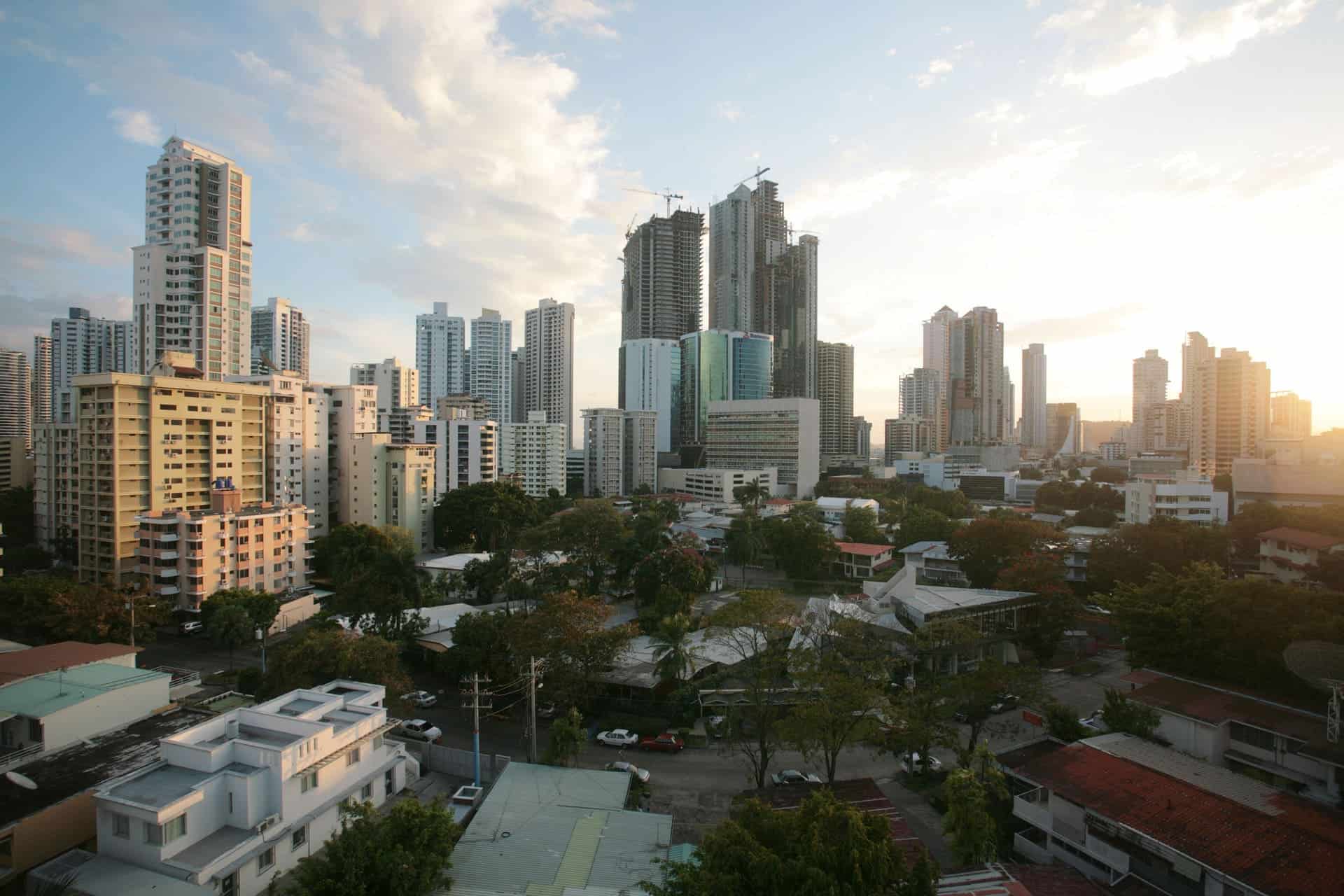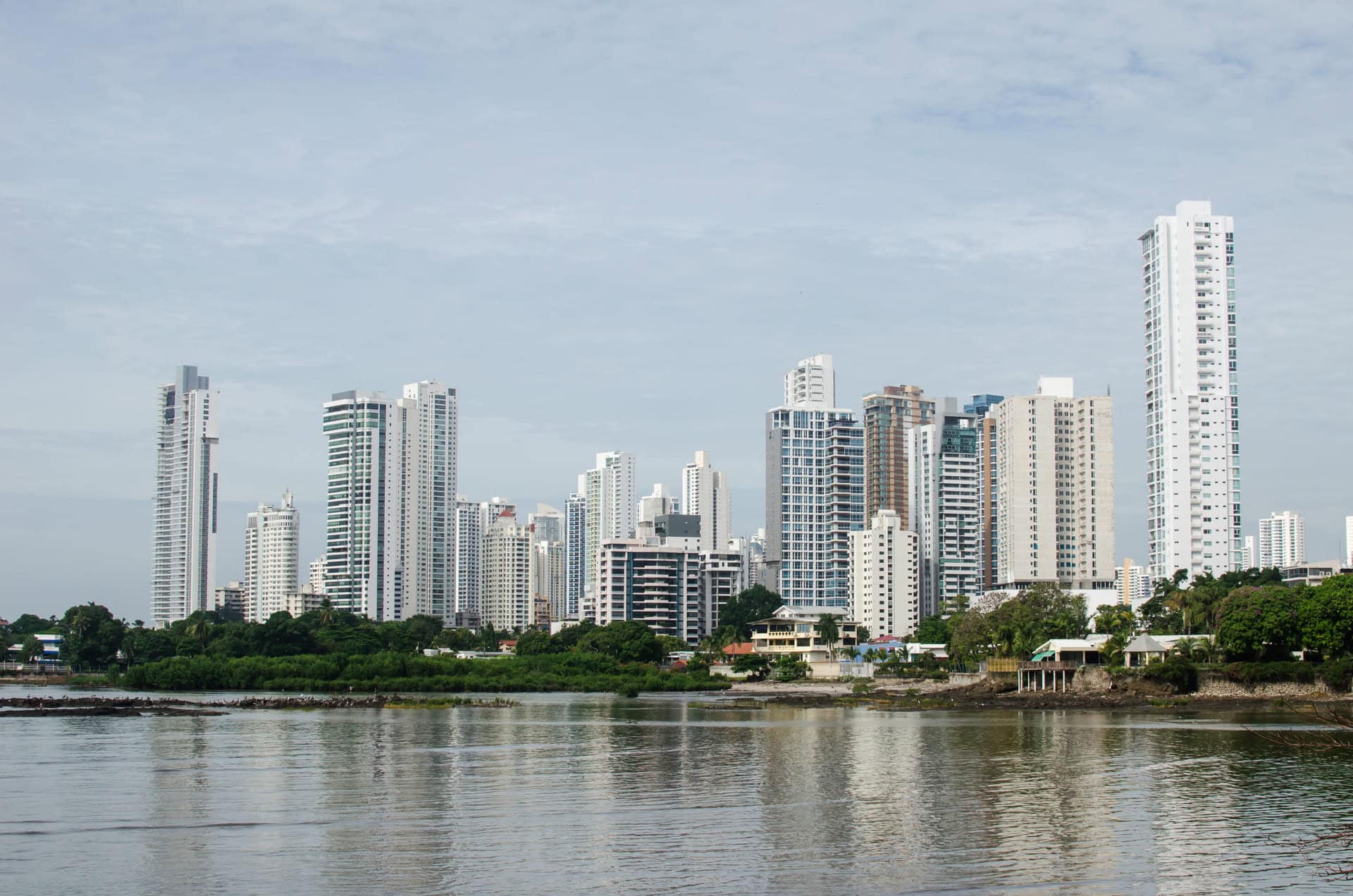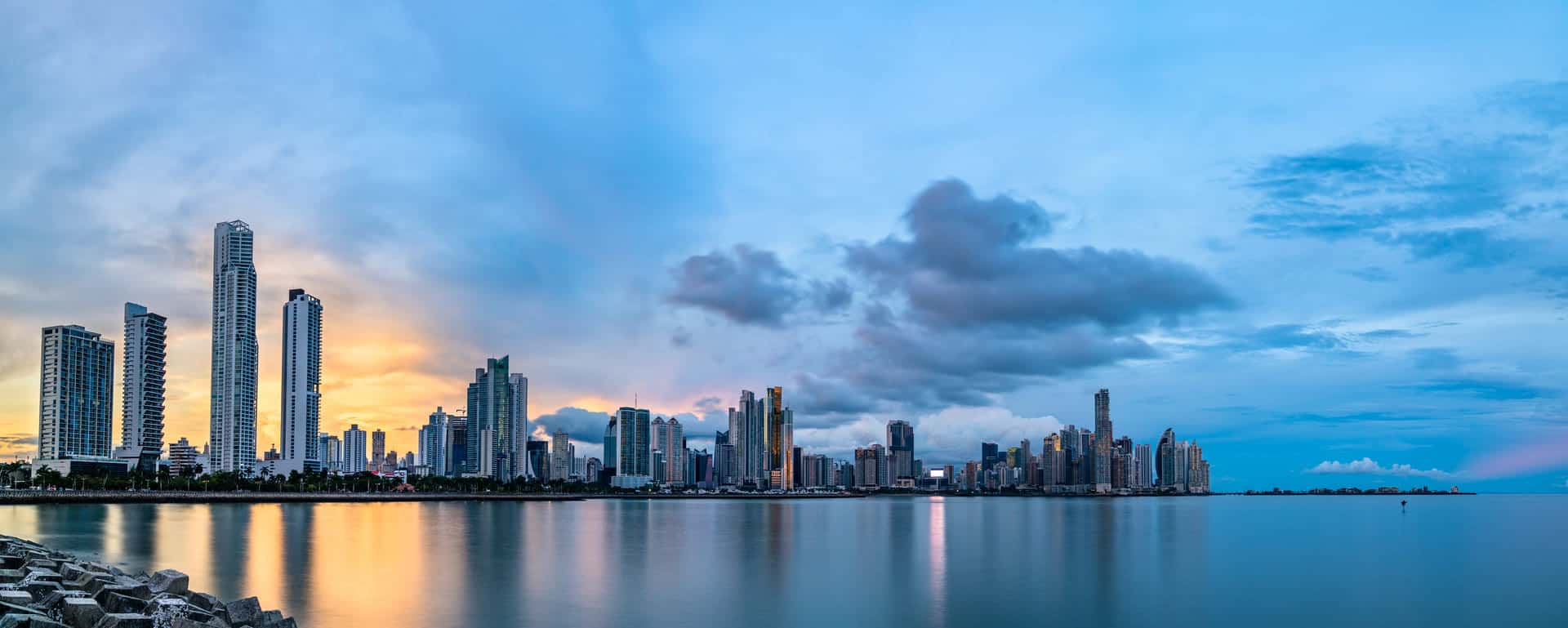In Panama’s warm and tropical embrace, Panamanian coffee isn’t just about sipping a daily cup, it plays roles in medicine, religion and even part of weddings and baptisms, where people share special cups. On a commercial note, coffee is a significant part of Panama’s economy, providing jobs for many people, from farmers to processors. Panama boasts different types of coffee, like Geisha, Catuai, and Bourbon. Thanks to Panama’s diverse geography with different altitudes, wet and dry seasons, and nutrient-rich soils. Panama is the perfect place for growing top-quality coffee. When you explore the areas where coffee is grown, you’ll discover hidden treasures in places like Boquete, Volcán, Tierras Altas, and Renacimiento, all nestled in Chiriqui Province. Panama’s perfect marriage of natural advantages, from the high elevations of Boquete to the lesser-known beauty of Renacimiento, makes it a one of a kind place for producing outstanding coffee beans. Let’s dive into the details of how Panama cultivates its coffee. The high altitude, climate, and various landscapes that create unique regions, and each one contributes to the wonderful flavors of coffee beans.
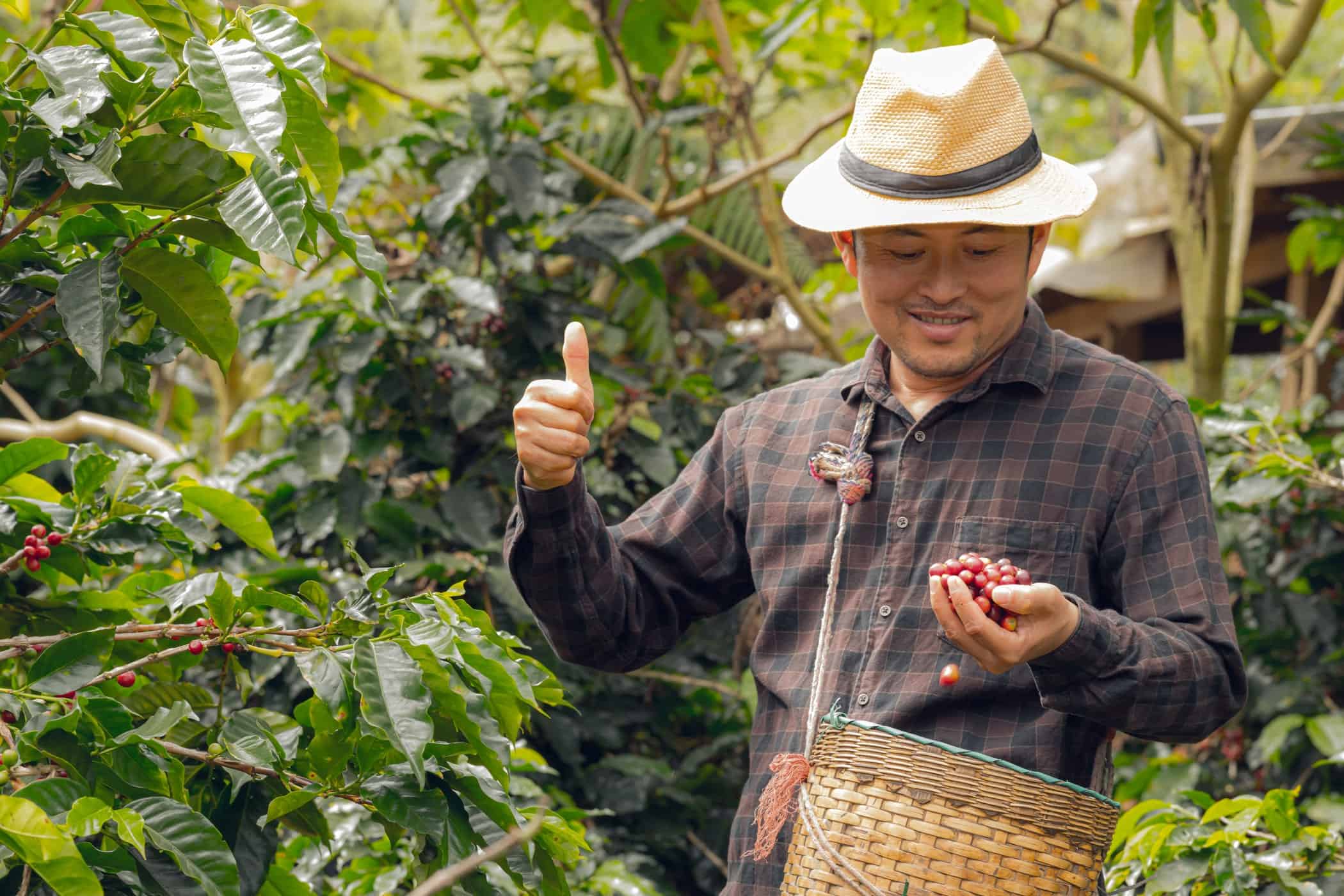
About Panamanian Coffee
Panama, boasts an ideal climate for growing coffee plants. According to data from the USDA, over 80% of Panama’s coffee is of the arabica variety, with the remaining 20% being robusta. Panama’s coffee industry is a captivating tale spanning more than two hundred years of growing, making, and selling one of the world’s most beloved products. The history of coffee in Panama is like a modern-day romance. It all began in the late 19th century when European immigrants came to settle in the region, bringing coffee with them. Chiriqui, a province in the far west of the country (known as the “valley of the moon” in the language of the indigenous people who once inhabited this area), was the first place where coffee took root.
Coffee holds a significant place in Panama’s culture, especially in rural areas where people gather over hot cups of coffee each morning as a daily tradition. Besides being a favorite drink, it serves medicinal and religious purposes, like weddings and baptisms where guests share a blessed cup. Economically, coffee farming and exports make up a vital part of Panama’s GDP. The coffee industry provides jobs for thousands, including farmers, pickers, processors, roasters, exporters, and others in related fields.
Coffee Varieties
Embark on a flavorful expedition through Panama’s coffee tapestry, where the renowned Geisha and the bold Typica are just a glimpse into the numerous varieties of coffee cultivated in Panama. Each coffee type carries distinctive flavors, intricately shaped by the Panamanian landscapes. In the following you will find a list of the various types of coffee beans cultivated in Panama:
- Geisha
- Catuai
- Caturra
- Maragogype
- Pacamara
- Mundo Novo
- Java
- Pache
- Typica
- Bourbon
- Amarillo
- SL28

Climate and Land Requirements for Coffee Farming
Panama’s coffee farming is distinguished by its division into two distinct cultivation zones: high-altitude and low-altitude regions, each contributing uniquely to the country’s renowned coffee profile.
High Altitude Regions
The high-altitude regions, primarily in the Chiriquí province, are the heart of Panama’s coffee cultivation. These areas benefit from a combination of high altitudes, rich volcanic soil, and a temperate climate, creating an ideal environment for coffee production. The high altitudes, ranging from 1,200m to 2,500m, contribute to a slower maturation of coffee beans, intensifying their flavors and aromas. These regions are characterized by their unique microclimates influenced by both the Pacific and Atlantic ocean breezes, offering a wide temperature range and rich soil due to past volcanic activity, particularly around the Baru Volcano.
The resulting coffee from these highlands is renowned for its complexity. It ranges from sweet notes of chocolate and caramel to fruity hints of berries and tropical fruits, with the famous Geisha variety standing out for its delicate floral and jasmine notes. The diverse microclimates within these regions, influenced by varying rainfall patterns, create a multitude of flavor profiles, reflecting the distinct terroir of each area. These conditions have fostered the development of a variety of Arabica coffees, which constitute 70% to 80% of Panama’s coffee production, with a focus on specialty and high-quality beans.
Low Altitude Regions
In contrast, the low-lying areas such as Cocle, Panama Oeste, and Colon, mainly cultivate Robusta coffee. These regions, while contributing less to the national production compared to their high-altitude counterparts, play a significant role in the local coffee industry and environmental conservation. The Robusta coffee grown here is primarily consumed locally and is characterized by its robustness and suitability to the tropical, mountainous climate of these areas. The cultivation in these regions is also intertwined with initiatives for environmental conservation, particularly within the Panama Canal basin, highlighting Panama’s commitment to sustainable coffee farming practices.
This duality in Panama’s coffee farming, with the high-altitude regions producing distinct, high-quality Arabica beans and the low-altitude areas focusing on robust Robusta varieties, underlines the diverse and rich coffee culture of Panama. Each region, with its unique climate, soil, and altitude, contributes to the tapestry of flavors that make Panamanian coffee a standout on the world stage.
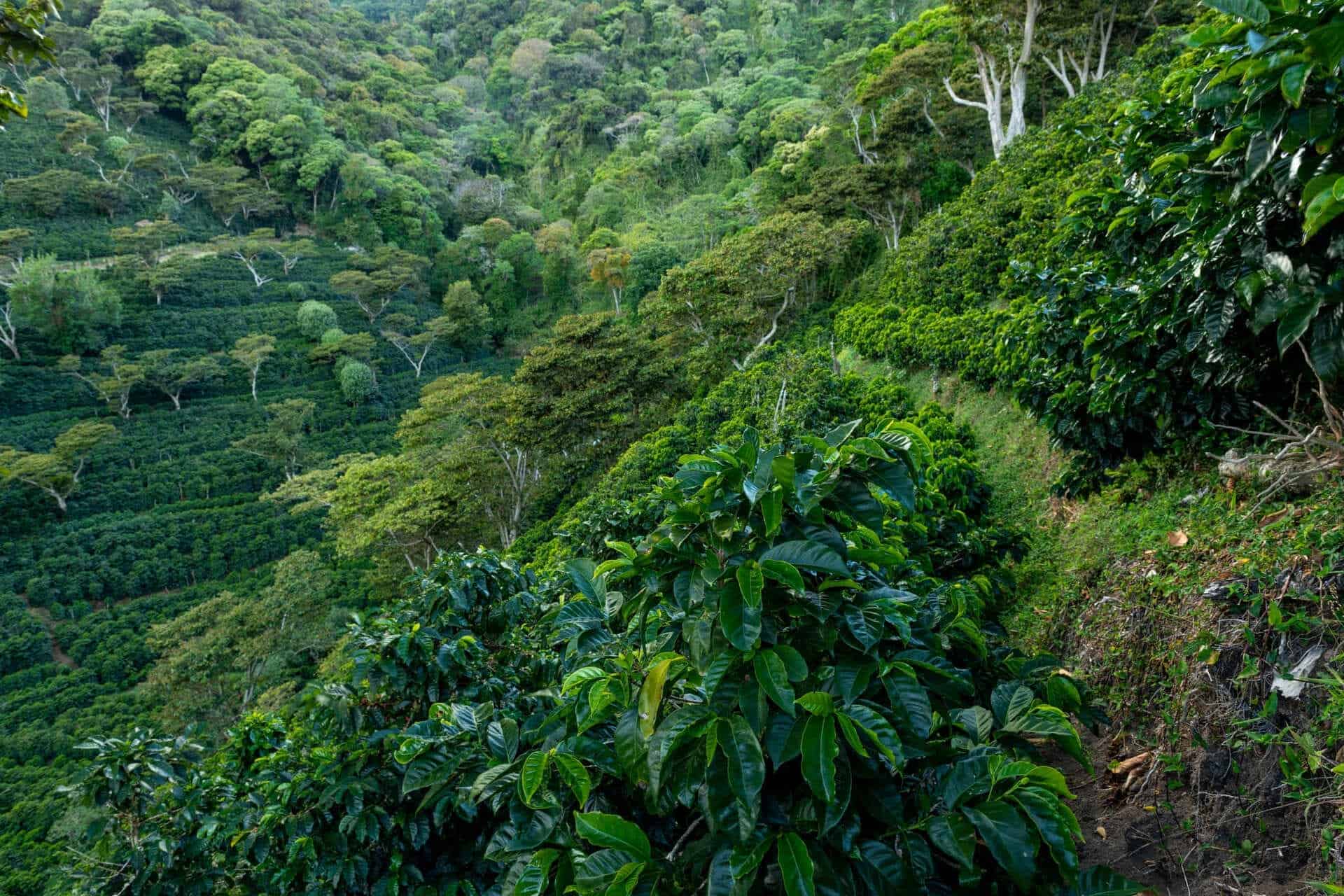
Best Regions for Coffee Farms in Panama
Panama is becoming a popular place for tourists worldwide, and it’s now offering exciting opportunities to invest in local coffee farms or visit them with a local tour guide. There are three coffee regions in Panama, that have are most popular for their favorable climate, fertile soil, making them the primary focus of investment. Let’s take a closer look at these coffee regions in Panama.
The Three Best Coffee Growing Regions
- Boquete and Barú: Boquete sits in the western part of Panama, up in the Chiriqui province right next to the volcano Barú. It’s at an elevation of 1,000 to 2,800 meters above the sea level, with temperatures typically ranging from 13°C to 24°C. Most notably, the coffee varieties Geisha, Typica, Caturra, Catuaí and Bourbon are grown here. This region offers a great combination of high altitude, a special microclimate, and soil packed with nutrients thanks to the vulcano. As a tourist, you can also check out some farms that are open to the public like Elida Farm, Lérida Farm, Don Pachi Estate Farm, and Cafeto Arábica Farm right in Boquete.
- Tierras Altas: Located on the opposite side of the volcano than Boquete, Tierras Altas is a coffee cultivation haven, boasting altitudes from 1,300 to 1,800 meters. This elevation, combined with the region’s rich volcanic soil and diverse microclimates, nurtures coffee beans with enhanced flavors, acidity, and aroma. Notably, the famous Geisha variety, along with Caturra, Catuaí, Pacamara, and Obatá, thrives here. Beyond coffee, Tierras Altas, the “breadbasket of Panama,” significantly contributes to national vegetable production. The region’s agricultural diversity and rising agrotourism trends offer exciting opportunities for investment and income diversification in coffee farming. This area is seeing increasing demand for agriculture tourism much like Boquete and has various farms that can be toured.
- Renacimiento: A lesser-known place for growing coffee is Renacimiento. It’s in the west part of Chiriquí Province right on the border to Costa Rica, at an elevation between 600 and 1,350 meters above sea level, with a temperature around 18°C. Here the main coffee varieties that are grown are the same as in Tierras Altas. There are some coffee farms in Renacimiento that tourists can visit, like Finca Café Eleta, but this region offers more seclusion and privacy due to its remote location in comparism to the other two locations.

More Coffee Growing Areas in Panama
- Piedra de Candela: This region, near La Amistad International Park, is known for its mixed, humid, and tropical forest environment that is favorable for coffee cultivation. The coffee farms here grow a variety of beans, including Caturra, Typica, Bourbon, and the renowned Geisha. The cultivation altitudes range between 1,200 to 1,700 meters above sea level. Piedra de Candela is part of the Biological Corridor of Central America and is a UNESCO Natural Heritage Site, highlighting its ecological importance. This area is characterized by a blend of millenary trees, exotic species, and a variety of flora and fauna, adding to the uniqueness of the coffee produced here. The region practices selective harvesting and focuses on both wet and dry processing of coffee beans.
- Santa Fe: Santa Fe in Panama is famous for its coffee farms and natural beauty. Nestled amidst lush greenery, this charming town boasts over a hundred coffee plantations. In Santa Fe, you’ll find a variety of coffee types, including Geisha, Catimor, and Caturra, known for producing top-notch coffee beans.
- Cerro Punta: Cerro Punta is part of the Chiriqui Highlands District, known for its volcanic soil and ideal rainfall, which contribute to the cultivation of diverse Arabica coffee varieties. This region is famous for types like Caturra, Typica, Criollo, and Geisha. The excellent growing conditions in Cerro Punta result in coffee beans with a distinct aroma, acidity, and body. This region’s agricultural richness extends beyond coffee, as it is also known for producing a significant portion of Panama’s vegetables.
Each of these regions offers unique attributes to their coffee production, from ecological diversity and altitude to specific cultivation practices. Their individual characteristics contribute to the rich tapestry of Panamanian coffee, each bringing a unique flavor profile and quality to the table.
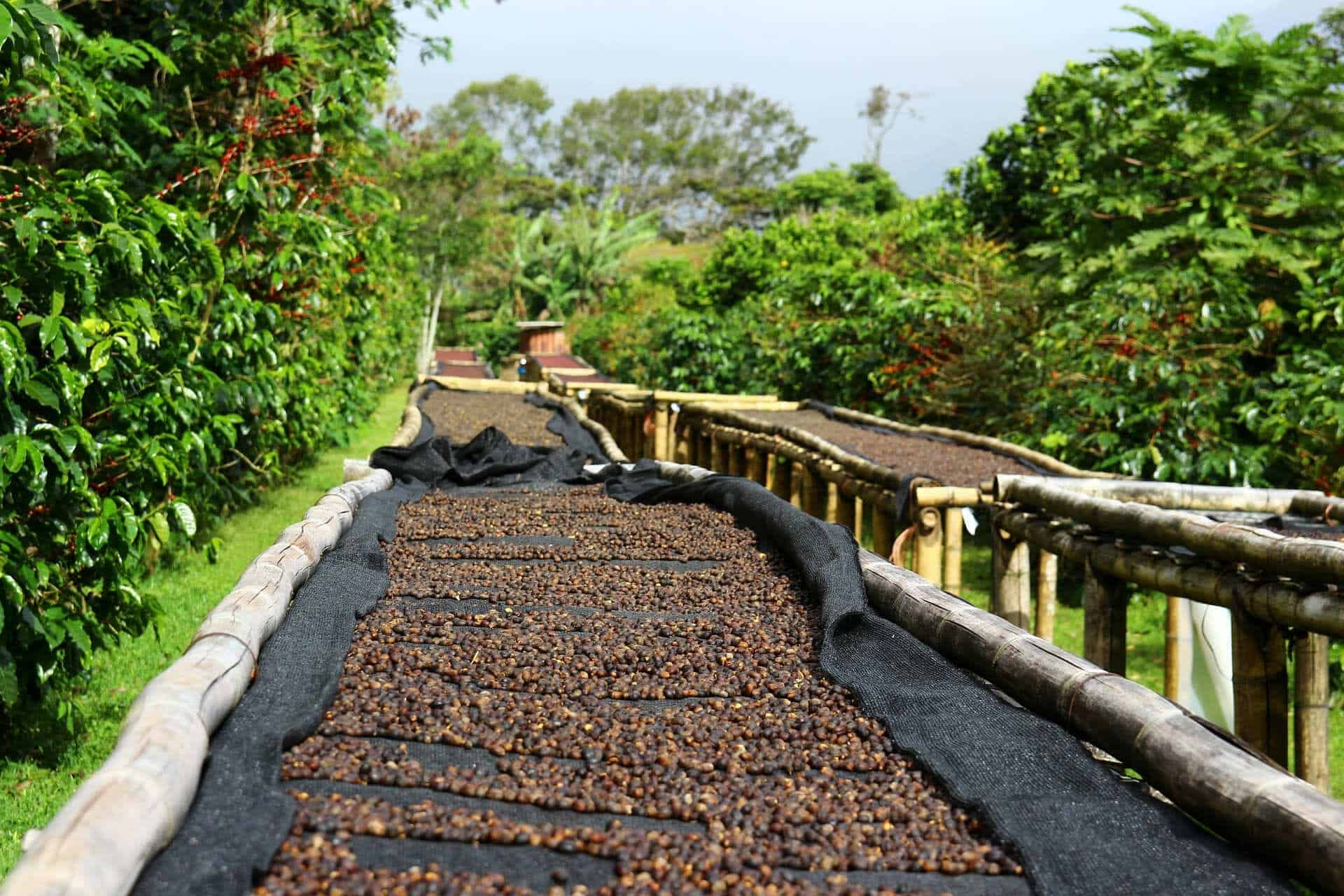
Benefits of Investing in a Coffee Farm
Investing in coffee farms in Panama offers a unique blend of advantages for potential investors. These farms are known for providing a stable and predictable income stream, thanks to the consistent annual profits yielded by coffee plantations and the ever-growing global demand for coffee. This aspect of the investment is particularly appealing as it ensures a steady market for the product.
One of the key benefits of investing in coffee farms over traditional real estate like houses and apartments is the lower price volatility. Coffee farms tend to exhibit greater resilience during economic fluctuations, making them a safer choice during uncertain times. Moreover, investing in coffee farms in Panama goes beyond financial returns. It supports socially and environmentally sustainable practices, positively impacting local communities. These farms provide fair wages and benefits to local farmers, contributing to community development and environmental conservation.
In addition, the coffee industry in Panama is deeply intertwined with the country’s culture and significantly contributes to its GDP. Investing in this sector taps into this rich cultural heritage. Furthermore, the industry boosts tourism, offering an additional revenue stream through farm tours and cultural experiences. Compared to other agricultural real estate investments, coffee farms in Panama stand out with their higher projected returns, averaging around 12% annually. This long-term return rate can be more appealing than other agricultural investments, which might offer lower yields or require more active management.
In essence, investing in Panamanian coffee farms provides a harmonious mix of stable income, low volatility, social responsibility, and cultural integration, making it an attractive option for investors seeking a long-term, ethically-aligned venture
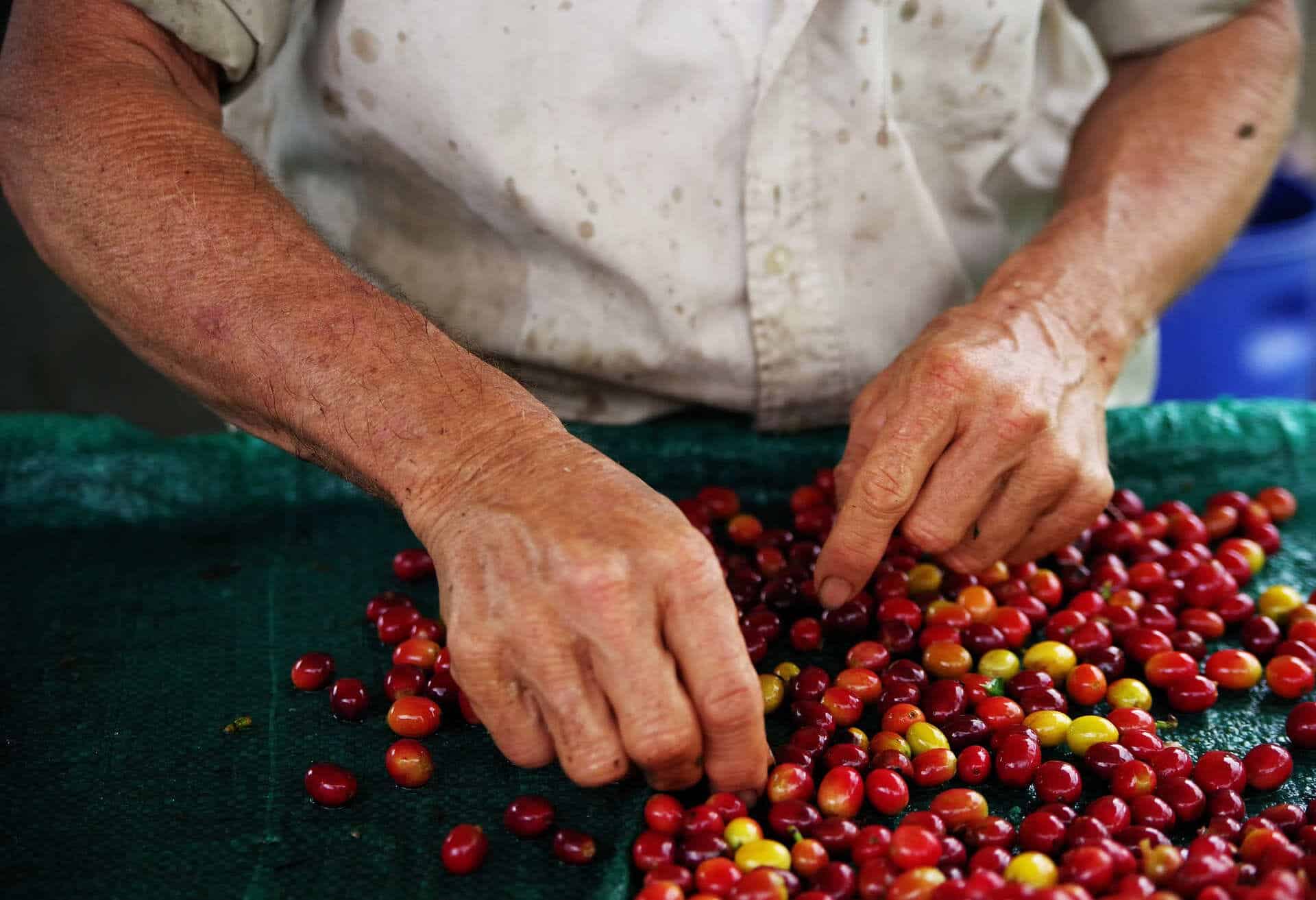
Considerations when Owning a Coffee Farm in Panama
Embarking on the journey to own a coffee farm in Panama is an exciting venture. This process unfolds as a unique opportunity to explore the lush landscapes of Panama, navigating through strategic steps that lead to the acquisition of a thriving coffee farm. Join us as we unravel the pathway to owning your own piece of paradise in the heart of Panama’s vibrant coffee culture.
Choosing the Right Farm: Look for farms that have the potential for high productivity. Many investors prefer purchasing underperforming raw land or existing coffee farms and turning them around into productive specialty coffee farms. Specialty coffee, unlike commodity coffee, fetches a premium price, translating into higher profit margins.
Investment and Ownership Structure: Starting at as low as $100,000 and reaching up to millions of dollars, investors can find coffee farms in various conditions and regions. If the land is not yet titled, you will have to title it in your name or your entity (such as an LLC or a trust). Make sure that you have the right for agricultural development and harvesting.
Management and Operational Model: While most properties will be titled and already have some kind of operation running, you will find it easy to hire farmers that have experience in cultivating coffee crops or of course, you do it yourself. On the other hand, some investments offer property management, where a company manages the farm’s day-to-day operations. This setup provides a passive income source, and typically comes with a management fee.
Financial Returns and Risks: The average annual return is projected at around 12%, with a positive free cash flow typically beginning 3 years after investment as the coffee trees mature. However, it’s crucial to acknowledge the risks, such as weather susceptibility and changes in global coffee consumption patterns.
Legal and Administrative Considerations: Be aware of potential delays in the parcel titling process. In some cases, investors have experienced delays due to slow-moving administrative processes or complications in comprehending foreign entities like U.S. trusts by the Panamanian government. If you are looking to commercially sell your harvest, then you will want to do your research on what kind of license you need, as those vary for selling locally compared to a focus on exporting larger quantities.
Investing in a Panamanian coffee farm is different from typical real estate investments due to its agricultural nature, operational model, and the specific market dynamics of the coffee industry. It also requires an understanding of legal processes, market trends, and patience for long-term returns.
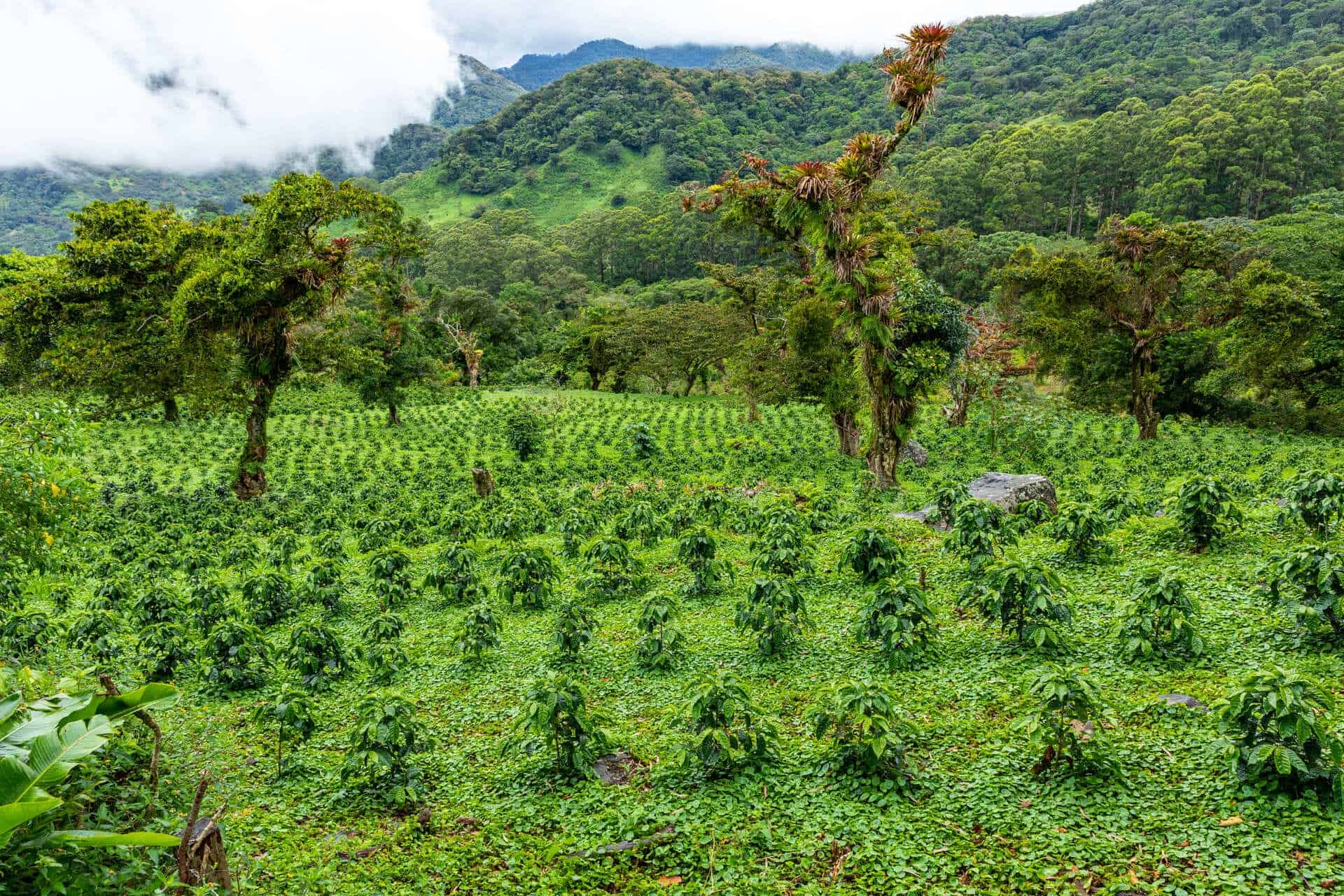
Economic Impact of Coffee in Panama
Panama’s coffee industry is a crucial part of its economy. In 2023, the coffee market in Panama is expected to make about $145 million in revenue. According to Statista, it’s predicted to grow by around 4.82% every year from 2023 to 2028. Panama’s coffee market is doing really well, mainly because people are increasingly interested in special coffee beans. Panama’s coffee industry is on the rise and undergoing changes. Coffee farmers are trying out different types of coffee and new ways to process it. The government is also investing in new technologies to help farmers grow better coffee more efficiently. A lot of coffee growers in Panama are going green by using eco-friendly methods that reduce pollution and harm to the soil. They are giving preference to growing coffee in the shade and might even use organic farming techniques. The coffee business in Panama plays a vital role in the country’s economy, offering jobs to more than 70,000 people.
Panama Agricultural Investor Visa
The Panama Agricultural Investor Visa program invites individuals to attain temporary residency by investing a minimum of $60,000 in Panamanian agribusiness, encompassing farms, agriculture, and aquaculture. The visa duration is six years, extendable every two years, with an additional $500 investment required for each dependent. The application process necessitates engagement with a Panamanian lawyer, authenticated documents, and adherence to specific investment areas deemed of national interest by the Department of Farm Development. Essential documents include notarized passport copies, photos, and authenticated police records. The process also involves obtaining certifications from authorities, proof of direct investment, and a health certificate signed by a licensed physician upon arrival. Extensions require proof of income, and applicants are advised to stay 10-14 days post-approval, adhering to formal dress during immigration procedures.
Conclusion
Panama’s coffee industry, deeply rooted in culture and economy, spans regions like Boquete, Tierras Altas, and Renacimiento, offering diverse flavors influenced by unique climates and altitudes. The process of owning a coffee farm involves strategic steps, from choosing locations to partnering with trusted agencies like Panacrypto, ensuring a sustainable and legally compliant venture.
Panama’s coffee market is predicted to grow and thrives on unique coffee varieties and eco-friendly farming practices, contributing significantly to the country’s economy. Beyond coffee itself, the Panama Agricultural Investor Visa offers residency tied to agribusiness, presenting opportunities for investors. In Panama’s vibrant coffee culture, this conclusion invites you to savor the richness of a dual experience where the aroma of coffee beans meets the promise of a thriving investment in the stunning landscapes of Panama.


